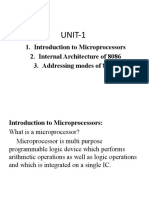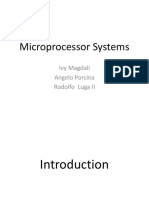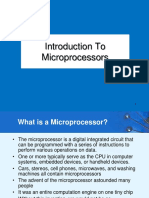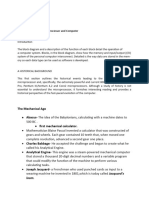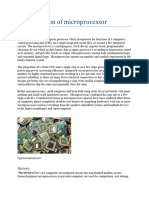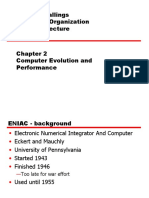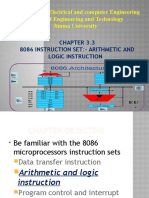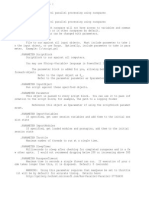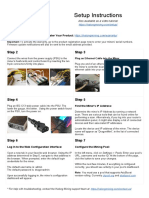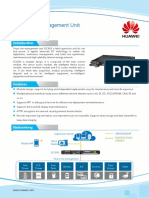0% found this document useful (0 votes)
94 views31 pagesCHAPTER 1 Introduction PDF
This document discusses the history and evolution of microprocessors from mechanical to electrical to modern digital computers. It begins with an overview of early mechanical calculators like the Abacus and Difference Engine. The electrical age saw the development of electromechanical computers like Z3 and ENIAC. The microprocessor age began with the invention of the transistor and integrated circuit, leading to the first microprocessor - the Intel 4004 in 1971. The document then covers the evolution of Intel microprocessors over time in increasing speed, complexity and capabilities. It concludes with definitions of key computer components and terminology.
Uploaded by
cudarunCopyright
© © All Rights Reserved
We take content rights seriously. If you suspect this is your content, claim it here.
Available Formats
Download as PDF, TXT or read online on Scribd
0% found this document useful (0 votes)
94 views31 pagesCHAPTER 1 Introduction PDF
This document discusses the history and evolution of microprocessors from mechanical to electrical to modern digital computers. It begins with an overview of early mechanical calculators like the Abacus and Difference Engine. The electrical age saw the development of electromechanical computers like Z3 and ENIAC. The microprocessor age began with the invention of the transistor and integrated circuit, leading to the first microprocessor - the Intel 4004 in 1971. The document then covers the evolution of Intel microprocessors over time in increasing speed, complexity and capabilities. It concludes with definitions of key computer components and terminology.
Uploaded by
cudarunCopyright
© © All Rights Reserved
We take content rights seriously. If you suspect this is your content, claim it here.
Available Formats
Download as PDF, TXT or read online on Scribd
/ 31





